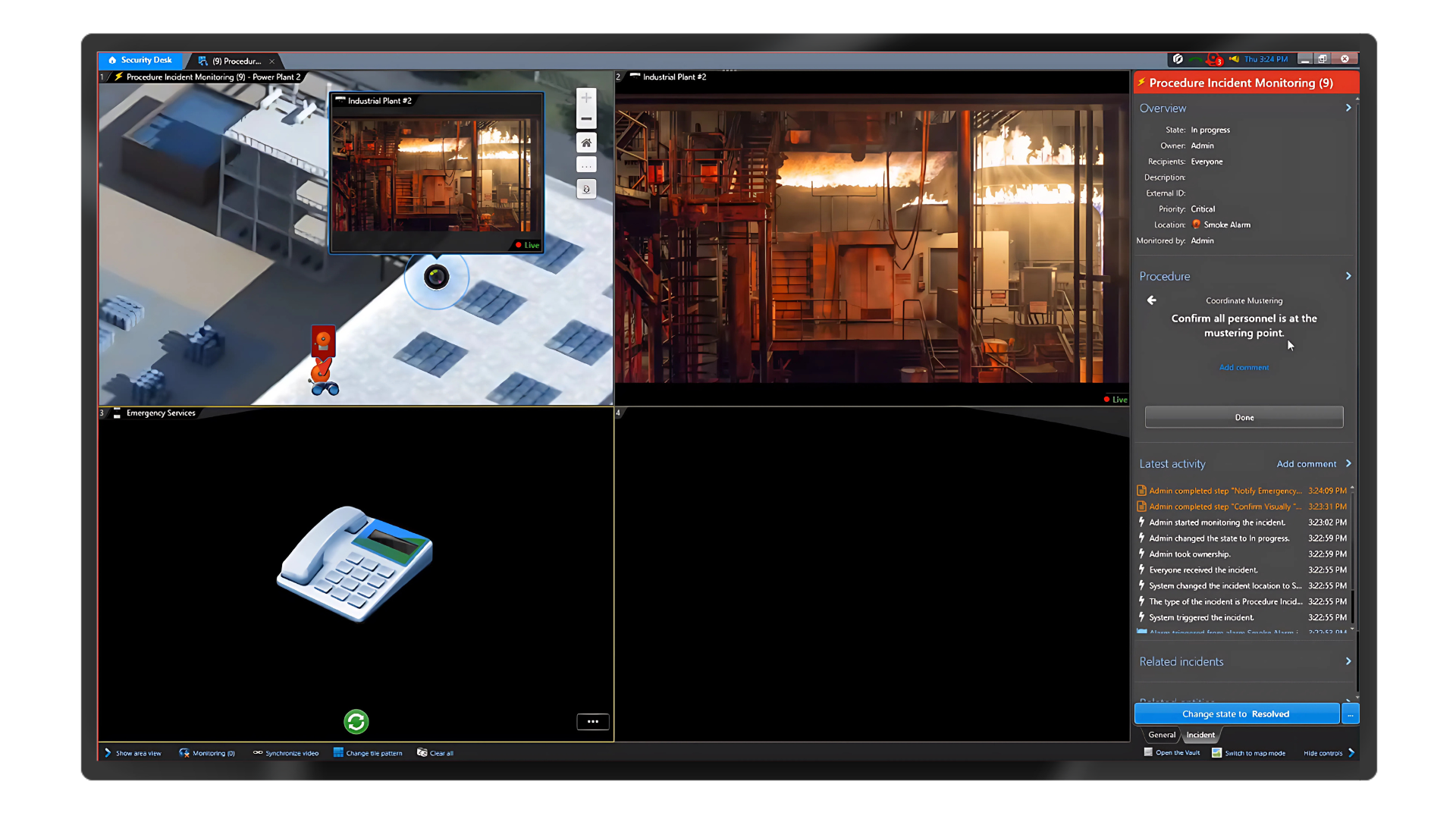How custom fire panels can slow you down
Fire panels play a key role in a life-safety system, connecting to monitoring and control devices throughout a facility. But while they’re vital, they also generate a flood of sensor data — data that’s only useful if you can keep up with it.

Traditionally, each system — whether it’s fire alarms, video surveillance, access control, or public address — runs on its own application. This fragmented setup forces operators to juggle multiple platforms, resulting in a disjointed view of what’s happening. The constant stream of alarms and notifications from different sources can easily overwhelm, leading to missed details and slower response times.
EBOOK
What if you could monitor your fire detection systems alongside your security operations, all in one place?
With a unified physical security platform, you can consolidate fire panel alerts, security data, and other critical system events into a single system. You gain a clear, centralized view of your facility, reducing alarm fatigue and enabling your team to act faster and more decisively in emergencies.
Why waiting for custom fire system integrations is slowing you down
Connecting a fire system involves building a custom integration using the panel’s specific API. This gives you a tailored solution for that panel. However, there are several challenges to this approach:
- Custom integrations take a lot of time and development effort—not just to build, but also to maintain as fire panel software updates and changes
- Each integration competes with other priorities, which can delay the process
- Fire panel rules and certifications vary by region, creating added complexity
- There are many different manufacturers and panel types, making it difficult to create and maintain custom code for each one
As a result, trying to develop and manage these custom integrations becomes an ongoing, complicated task.

Simplifying fire panel integration with Security Center
Our Industrial IoT integration removes the need for custom software development. Anyone familiar with Security Center can now build integrations—no coding required. System integrators and customers can connect devices and systems using standard industry protocols. Here’s how this integration strengthens the Genetec ecosystem:
- One-way communication (and bi-directional for certain protocols) is established between Security Center and various devices, including many fire panel systems
- If the fire panel can communicate over a compatible protocol, it can sync the status of its sensors in Security Center as data points
- Operators can monitor the sensor state, view any available data values, and change the device state and icon based on configured rules
Additionally, users can take advantage of the following features:
- Plot data points on maps as dynamic icons representing their current state
- Configure event-to-actions or trigger incidents based on state changes
- Generate reports of data point states and values for investigation or auditing purposes
This integration simplifies the process and allows for more streamlined management of fire panel systems within Security Center.

Transform your security with powerful IoT integrations
Fire panels are just the tip of the iceberg when it comes to Industrial IoT integration. By consolidating data from various systems and connected devices into one platform, operators gain the ability to make informed decisions faster, presenting security information within the full context of their facility.
This solution allows you to connect to any system or device that communicates over a supported protocol, enabling partners and customers to integrate the tools they rely on—whether local or specialized — without waiting for manufacturers. Once integrated into Security Center, the possibilities for using that data are vast, such as:
- Monitoring active machinery in real-time alongside a video management system for better situational awareness
- Automating actions like turning lights on/off or adjusting thermostats based on events
- Prompting operators to announce building policies when issues like vaping or fumes are detected in bathrooms
- Launching dynamic standard operating procedures during fire events to coordinate evacuation, fire suppression, and emergency response
And the potential doesn’t stop there — this approach can transform how your security system operates, making it smarter and more responsive.
EBOOK
